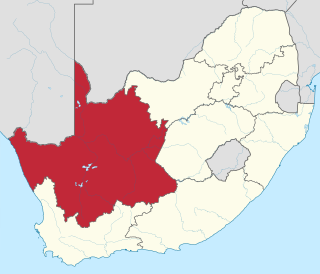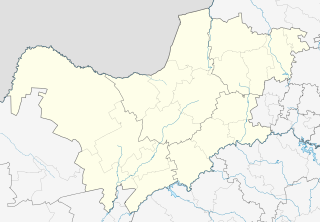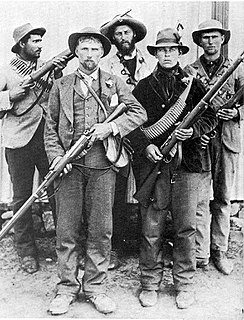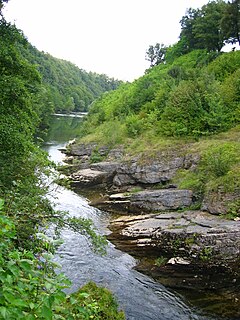
The first humans are believed to have inhabited South Africa more than 100,000 years ago. South Africa's prehistory has been divided into two phases based on broad patterns of technology namely the stone age and iron age. After the discovery of hominins at Taung and australopithecine fossils in limestone caves at Sterkfontein, Swartkrans, and Kromdraai these areas were collectively designated a World Heritage site. The first inhabitants of South Africa are collectively referred to as the indigenous Khoisan people, some were absorbed by the darker skinned Africans during the Bantu expansion from Western and Central Africa while majority became known as Coloureds. European exploration of South Africa began in the 13th century when Portugal committed itself to discover a new silk road route to China. These explorers created detailed maps as they pressed down the African Coast and in 1488 they rounded the Cape of Good Hope. The Dutch East India Company established a trading post in Cape Town under the command of Jan van Riebeeck in 1652, European workers who settled at the Cape became known as the Free Burghers and gradually established farms in the Dutch Cape Colony.

The Orange Free State was an independent Boer sovereign republic in southern Africa during the second half of the 19th century, which ceased to exist after it was defeated and surrendered to the British Empire at the end of the Second Boer War in 1902. It is the historical precursor to the present-day Free State province. Extending between the Orange and Vaal rivers, its borders were determined by the United Kingdom of Great Britain and Ireland in 1848 when the region was proclaimed as the Orange River Sovereignty, with a seat of a British Resident in Bloemfontein. Bloemfontein and the southern parts of the Sovereignty had previously been settled by Griqua and by Trekboere from the Cape Colony.

The Boer Republics were independent, self-governed republics in the last half of the nineteenth century, created by the Dutch-speaking inhabitants of the Cape Colony and their descendants, variously named Trekboers, Boers and Voortrekkers in mainly the middle, northern and north eastern and eastern parts of what is now the country of South Africa. Two of the Boer Republics achieved international recognition and complete independence: the South African Republic and the Orange Free State. The republics did not provide separation of church and state, and initially only the Dutch Reformed Church, then also other churches in the Calvinist Protestant tradition, were allowed. The republics came to an end after the Second Boer War which resulted in the British annexation and later incorporation into the Union of South Africa.
The Griqua are a subgroup of Southern Africa's heterogeneous and multiracial Coloured people, who have a unique origin in the early history of the Cape Colony.
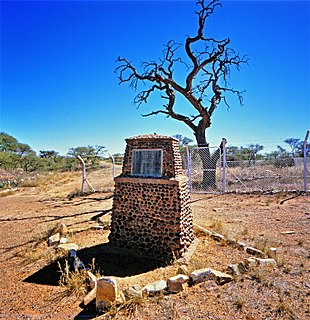
Barkly West is a town in the Northern Cape province of South Africa, situated on the north bank of the Vaal River west of Kimberley.

Kgosi (Chief) Galeshewe,, was a South African chief of the Batlhaping group in South Africa. He was an anti-colonial revolutionary and orchestrated rebellions against the Cape Colony government. The Galeshewe Township in the Sol Plaatje Municipality, Kimberley, has been named after him. A South African Navy fast attack craft has also named after him. Galeshewe was born in 1835 near Taung, South Africa.
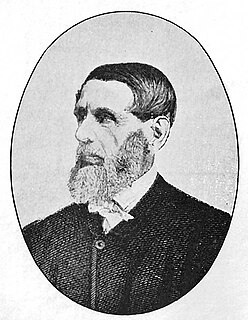
Jacobus Nicolaas Boshof was a South African (Boer) statesman, a late-arriving member of the Voortrekker movement, and the second state president of the Orange Free State, in office from 1855 to 1859.

The McGregor Museum in Kimberley, South Africa, originally known as the Alexander McGregor Memorial Museum, is a multidisciplinary museum which serves Kimberley and the Northern Cape, established in 1907.

The Siege of Kimberley took place during the Second Boer War at Kimberley, Cape Colony, when Boer forces from the Orange Free State and the Transvaal besieged the diamond mining town. The Boers moved quickly to try to capture the area when war broke out between the British and the two Boer republics in October 1899. The town was ill-prepared, but the defenders organised an energetic and effective improvised defence that was able to prevent it from being taken.
Driekops Eiland is a rock engraving or petroglyph site in the bed of the Riet River close to the town of Plooysburg, near Kimberley, Northern Cape, South Africa.
William Thomas Gaul (1850–1927) was Rector of All Saints Church, Du Toit's Pan, Kimberley, afterwards of St Cyprian's Church, Kimberley, Rural Dean of Griqualand West, and Archdeacon in what was still the Diocese of Bloemfontein, before being elected the second Bishop of Mashonaland, where he styled himself "the smallest bishop with the largest diocese in Christendom." He officiated at the funeral of Cecil John Rhodes and helped draft the Rhodes Trust Deed.
Wildebeest Kuil Rock Art Centre is a rock engraving site with visitor centre on land owned by the !Xun and Khwe San situated about 16 km from Kimberley, Northern Cape, South Africa. It is a declared Provincial Heritage Site managed by the Northern Cape Rock Art Trust in association with the McGregor Museum. The engravings exemplify one of the forms often referred to as ‘Bushman rock art’ – or Khoe-San rock art – with the rock paintings of the Drakensberg, Cederberg and other regions of South Africa being generally better known occurrences. Differing in technique, the engravings have many features in common with rock paintings. A greater emphasis on large mammals such as elephant, rhino and hippo, in addition to eland, and an often reduced concern with depicting the human form set the engravings apart from the paintings of the sub-continent.
The concept of the Northern Cape as a distinct geo-political region of South Africa coalesced in the 1940s when a "Northern Cape and Adjoining Areas Regional Development Association" was formed and the first map featuring the name "Northern Cape" was published. The geographic spread to which the term applied was not fixed until 1994, however, when it attained precise definition as the Northern Cape Province, one of South Africa's nine post-apartheid provinces. Since then there have been boundary adjustments to include parts of the former Bophuthatswana adjacent to Kuruman and Hartswater. Vryburg and Mafikeng, in the north eastern extremity of the former Cape Province - and hence regarded as part of the pre-1994 "Northern Cape" - are excluded, being part, now, of the North West Province.

The Nooitgedacht Glacial Pavements comprise a geological feature between Kimberley and Barkly West, South Africa, pertaining to the Palaeozoic-age Dwyka Ice Age, or Karoo Ice Age, where the glacially scoured ancient bedrock was used, substantially more recently, during the Later Stone Age period in the late Holocene as panels for rock engravings.
Pniel was a mission station established by the Berlin Missionary Society on the Vaal River between modern Barkly West and Kimberley, South Africa, in 1845.
The Revd George Mitchell was a missionary priest of the Anglican Church serving in the Free State, South Africa, from 1864, and afterwards at Kimberley, who pioneered early translation of liturgical Epistles and Gospels and portions of the Book of Common Prayer into Setswana. He was born near Mintford in England in 1835 and died in Kimberley, South Africa.
The Revd William Crisp was a missionary priest of the Anglican Church in the Diocese of Bloemfontein, South Africa, who served there from the mid-1860s. The Society for the Propagation of the Gospel described him as “the first and greatest apostle of the native races” in the central part of South Africa, who, it added, “had sympathy with the native point of view”. Crisp was born at Southwold, England, in 1842. He died in Cape Town in 1910.
Kgosi (Chief) Luka Jantjie was a hunter, trader, diamond prospector, and farmer. He was a chief of the Batlhaping ba Manyeding group of the Batswana in Kuruman. He was born in Kimberley, South Africa in 1835 and was the son of a Christian convert. Jantjie spent most of his life protecting the rights to land of his people and is considered a struggle hero for his battle against British colonialism. He was the cousin of Kgosi Galeshewe.


